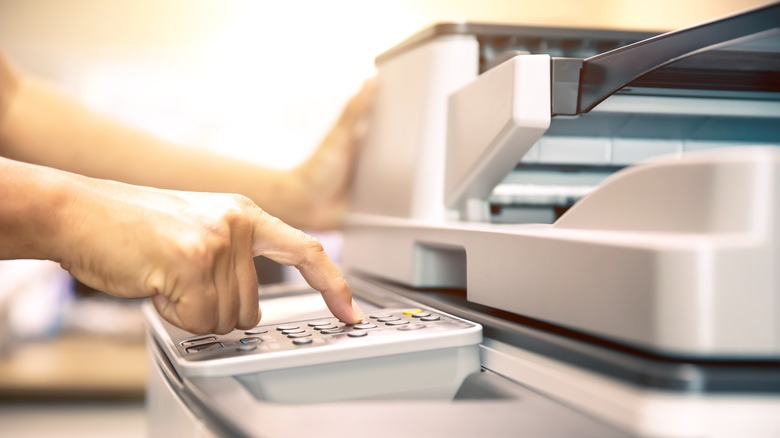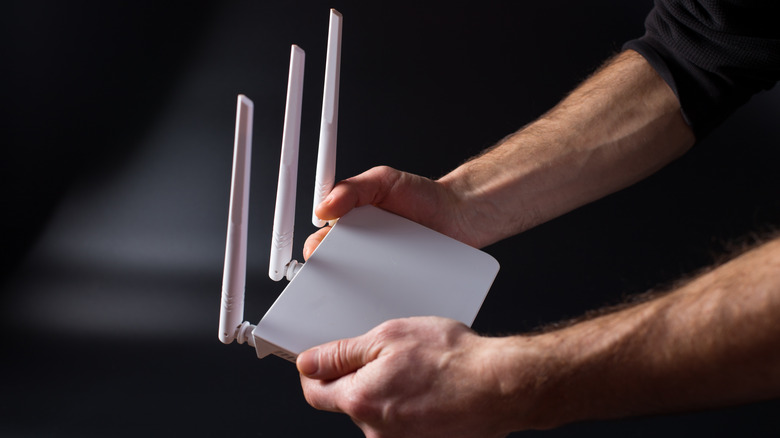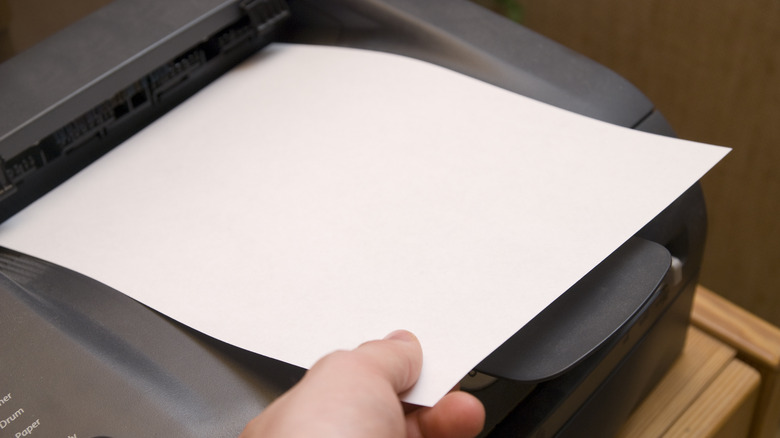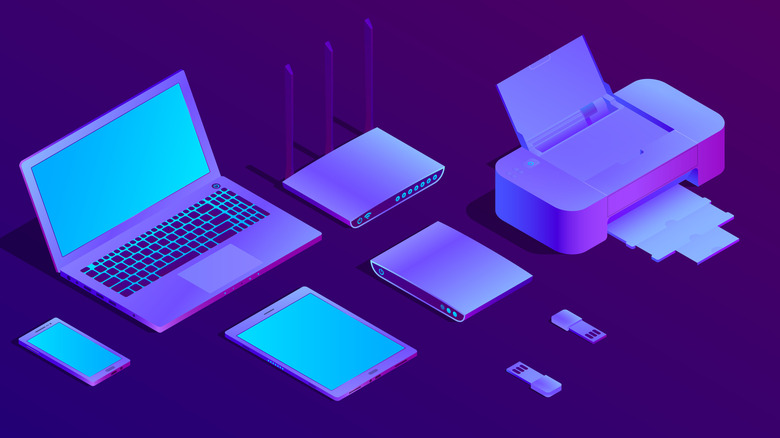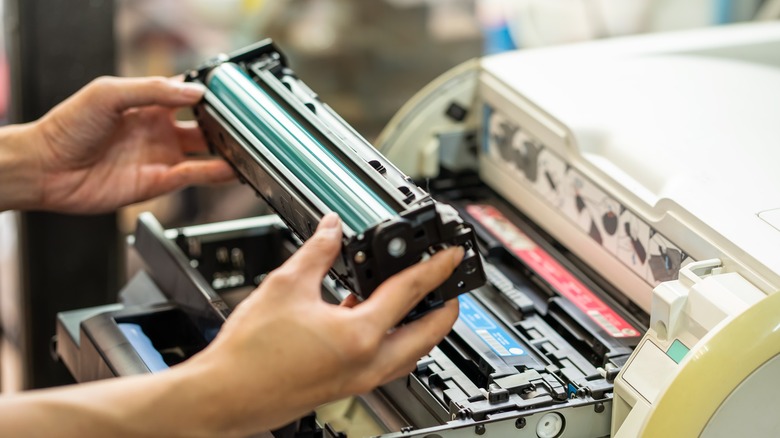Why Your Printer Is Slow And How To Fix It
Those working from home or exploring the world of higher education will be well-versed in the use of personal printers. The printer is a crucial device used in a wide range of home environments, including those that go beyond academia or work-from-home requirements. Printing documents and images is something that virtually everyone will find necessary from time to time, and a reliable printer is therefore something that nearly every household will need.
Yet, many people find that their printer functions much slower than optimal. The printer is a complex electronic device with multiple moving parts, as well as communication and connectivity infrastructure. These varied components that straddle hardware and software realms can make diagnosing a slow print speed somewhat difficult. Still, troubleshooting a sluggish printer isn't a job that will necessarily require the assistance of a professional. If you're experiencing a slow printer speed that's making routine tasks a bear to complete, these areas of focus can help identify and solve the issue that's affecting your device.
The printer is suffering from a poor quality wireless connection
One of the most common issues that plague home printers is poor connection. While corporate offices and other business spaces use robust wired connections and wireless systems that are underpinned by active IT departments, home users are required to manage connectivity on their own. But if you're not someone who is tech-savvy, the state of your wireless network may not be something that immediately jumps out as a potential pitfall when it comes to a stable printer function and respectable print speeds.
Your home's internet connection health plays a significant role in the capabilities shown by your printer, specifically if you print to the device through a wireless connection. Moving your printer closer to the router can be all that is required to improve the strength of your signal and the resulting speed of the tool. Depending on where your router is in the home, you may also suffer from interference caused by dense walls, the microwave or other electronic equipment in the home, and other issues. This will be felt throughout your internet-connected devices, though, making printing one of many tasks that experience pedestrian speeds. Moving your box to a new part of the home or opting for a wired connection between your computer and the printer can alleviate your speed issues if wireless connectivity remains an issue even after these changes are made without much improvement.
You're printing in a less than optimal mode
Your printer preferences should be the next port of call. If connectivity isn't the culprit then you may be printing with less-than-optimal features and preferences enabled, slowing down the product as a result.
The first setting to investigate is the print quality. To do this navigate to your printer setting menu:
- Open your system settings window and navigate to Printers & Scanners (in either Windows or Mac systems).
- Select your printer from the list and click Manage.
- Navigate to your printer's preferences and find the quality settings.
If you're experiencing slow print speeds, your printer may be set to print with the best quality available enabled. For text documents or reference material (like household bills, to-do lists, etc.) best quality printing simply isn't necessary. Switching this selection to "Standard," "Better," "Normal," or any other terminology that's found here, or the "Draft" quality that represents another step down from the highest output level will improve the speed of your printer by a noticeable margin.
You may also want to investigate the advanced settings as well. "Quiet Mode," for instance, will reduce the volume of tedious mechanical movements within the printer, offering better focus or less disturbance for those who print late at night or in the midst of other tasks that require focus. Yet, with Quiet Mode enabled, the printer will perform its duty much slower than in standard printing mode.
The printer's driver is out of date
Your computer and printer require updated drivers to perform their roles as expected. A driver is a program that operates some part of your device's function. For a printer, the drivers that are installed allow the unit to interact with your computer or phone, transferring the data and files required to take a digital document and print it out onto paper.
Drivers are constantly updated by the companies that make these devices, though, so you can't always guarantee that the printer is running the most up-to-date software at all times. Turning on automatic updates will help alleviate the issues that come along with outdated driver installation. This will ensure that your printer is working with the most recent connectivity and functionality architecture. You may also want to check for updates periodically on your own; this is particularly useful if you've started to see a slowdown in printer speed without any obvious indication of the source. On your computer, if you navigate to "Printers & Scanners" in the settings menu, you can check for updates to the driver without having to search the web on your own. Alternatively, navigating to the manufacturer's website will allow you to compare the brand's most recent driver updates to those running on your machine. If you find that yours is outdated, you can download the update directly from the brand's site.
You may be using the wrong kind of printer
One last consideration that you should make is in regard to the actual device itself. If the printing is slower than you'd like, you might want to consider a new printer altogether. Older models will routinely print slower than newer ones, but this isn't the only cause of a slow print job. Inkjet printers rely on a mechanism that traverses the ink cartridges back and forth across the sheet of paper. For a text document or image, this can take quite a few passes to complete, and the more complex the print target, the slower your inkjet printer will operate.
Laser printers, on the other hand, use an electrically charged drum to impart the toner on the page. As a sheet of paper is fed through the unit, the printer reverses polarity to create a charged image of the document. Then as the page rolls through the printer, toner is attracted to the resulting charge disparity and sticks to the page. Laser printers are significantly faster at working through print jobs, and for those who do a lot of it, making the switch can be beneficial for both speed and cost-effectiveness. Indeed, not only are laser printers much faster but they also cost less to operate over the long term (even though they command a higher price tag upfront). Making the switch can dramatically improve the speed at which your documents are transformed from digital to hard copy.
